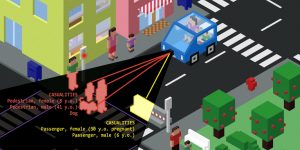I’m sure the question “What if I had studied more for my exams?” crossed your mind at least once during your time in university. In order to answer this question we would have to travel to the past and check if studying more would have helped us. However, is time travelling possible?
There are many theories suggesting that time travelling is possible because time is relative. Einstein showed that there is a strong relationship between time and space as one cannot exist without the other. Since time is relative in different locations of the Universe, a being can be in a place where time passes slower than on Earth.
Traveling to the future can be made possible since velocity and force affect the normal state of time. In other words, if people would be able to travel approximately at the light velocity, they would be traveling to the future. The time on Earth would be a lot faster compared to the time passed when traveling at light speed. Additionally, a strong force of gravity could also alter time. For example, if we could be able to stay close to a black hole, a strong force of gravity would try to pull us. If we do not let this force pull us, we would experience that time goes slower than on Earth.
We can also think of Einstein’s theory of special relativity as a cube. There are many ways to cut a cube. When we think about our present, an event that everyone on Earth can perceive that happens at the moment, represents a vertical 90 degrees cut on our cube. However, what if someone far away in the universe is not at our same time line? This activity would create an angle between what the distant being considers the present and what is considered the present on Earth. Furthermore, this movement would allow this individual to presence the past or the future of the human society. Therefore, future, present and past are real in what we consider our present. For this reason we could think about the Novikov self-consistency principle , which explains the possible existence of parallel dimensions. If this principle happens to be true, we could say that traveling to the past is also possible.
There are other theories that explains the possibility of travelling to the past through wormholes. Simply put, a wormhole is a passage that connects two points in space and any object that goes through it can travel faster than the speed of light. They are predicted by Eisten’s theory of general relativity but there is no empirical evidence on wormholes existence and it would be extremely hard to manipulate them.
Therefore travelling in time is possible in theory, but I think it is not yet practicable with our current technology and knowledge of the physics of the Universe. Unfortunately we can’t count with time travelling to solve our studying problems yet!



